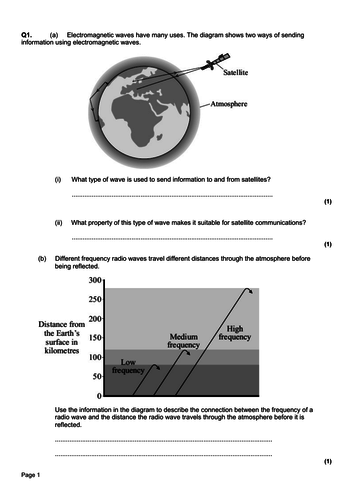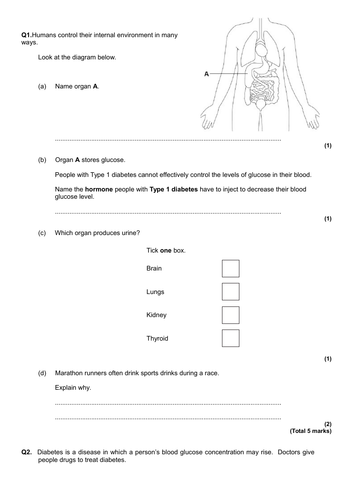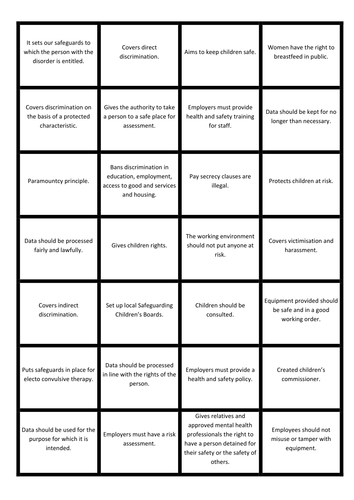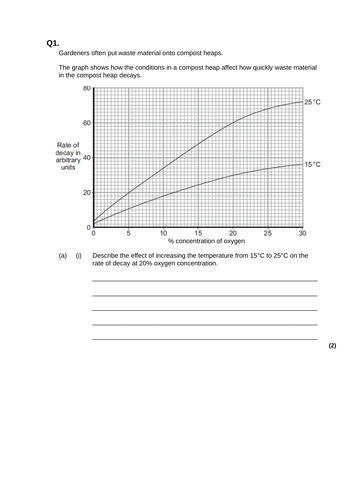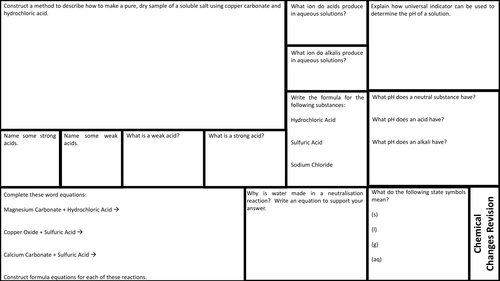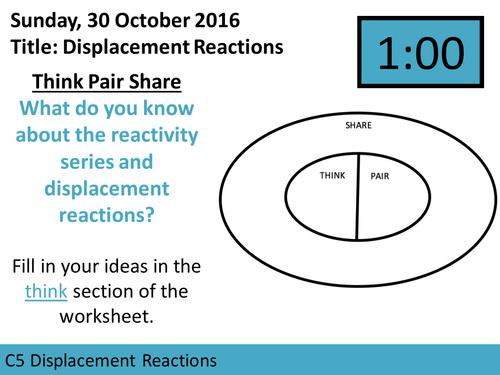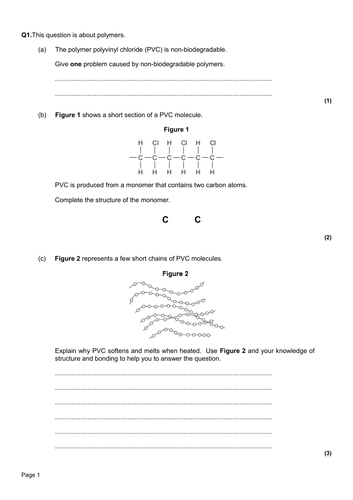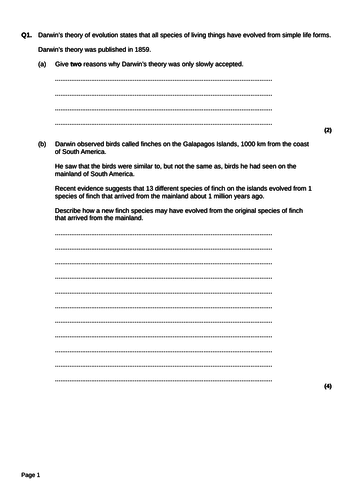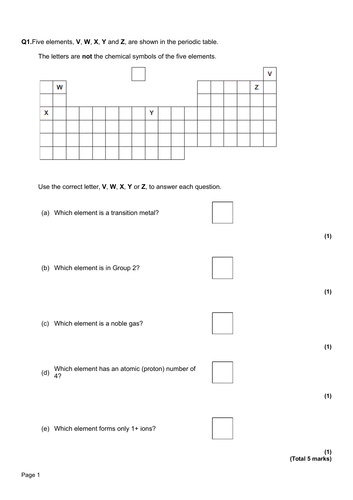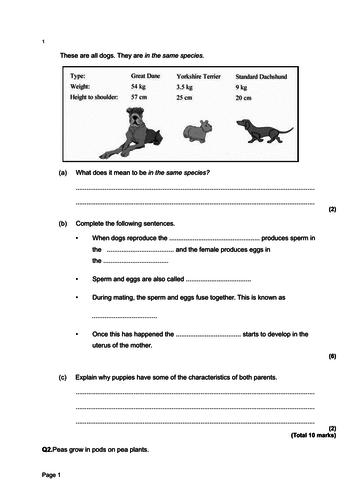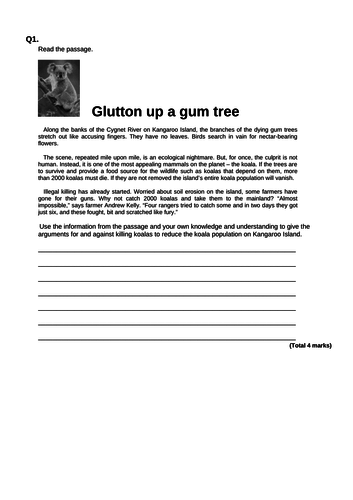692Uploads
528k+Views
556k+Downloads

AQA GCSE C3. Structure and Bonding Sequence of Lessons - Chemistry Specification
This is a sequence of lessons that I use for teaching the topic C3 Structure and Bonding for the new AGA GCSE. This can be used to teach students following the Chemistry Specification. These lessons cover 4.2 Bonding, structure, and the properties of matter from the specification.
The lessons in the sequence of lessons are:
L1 States of Matter
L2 Ionic Bonds
L3 Ionic Compounds
L4 Covalent Bonds
L5 Simple Molecules
L6 Giant Covalent Structures
L7 Graphene And Fullerenes
L8 Metallic Bonds
L9 Alloys
L10 Nanoparticles
L11 Applications of Nanoscience
These lessons can also be downloaded separately from my store.
Bundle

Space Sequence of Lessons
Sequence of lessons to introduce students to Space. The lessons included are:
L1 The Night Sky
L2 The Solar System
L3 The Earth
L4 The Moon
Bundle

AQA GCSE Trilogy C3, C4, C5 C6 and C7 Sequence of Lessons
Bundle of resources for the following topics in the new Trilogy Specification:
C3
C4
C5
C6
C7
Bundle

AQA GCSE C3, C4, C5, C6, C7 Sequence of Lessons - Chemistry Specification
Bundle of resources for the following topics in the new AQA Chemistry Specification:
C3
C4
C5
C6
C7
These lessons and individual sequences of lessons and also be downloaded individually from my store.

LO2 Values of Care Bundle- OCR Cambridge Nationals Health and Social Care RO21
A set of activities to help students develop their skills in answering extended questions in the RO21 Care Values Exam. These activities develop students understanding and ability to answer an extended question that is based on one that frequently comes up in the RO21 exam in which students are asked to explain the importance of care values and how they are applied.
In the bundle are 6 activities which focus on the following:
Being a reflective practitioner
Practising anti-discrimination
Encouraging learning and development
Ensuring equal opportunity
Promoting equality and diversity
Effects if care values are not applied
These activities guide students through understanding what the question is asking them to do, planning key words to use, their planning of the key points they need to include and then using this to answer the question. Also included in each of the activities is a marking sheet that can be used for teacher or peer marking. This includes guidance of how to mark the answer and space for feedback to be given as well as space for the student to respond to this feedback.
The sheets could be printed on A4, but I enlarge pages 1 and 2 to print A3 double sided and print the 3rd page for peer marking on A4 to then be stuck in their exercise books.
Included in the files is a PDF copy of the activity with an example already in the planning sheet and another PDF document with no examples included. The activities in this bundle can also be purchased individually.

AQA GCSE C6 Process of Electrolysis
A lesson covering The Process of Electrolysis designed for the new AQA GSCE C6 topic on Electrolysis. The lesson could be used for the Chemistry and Trilogy specification as it covers content from section 4.4.3.1 of the specification. Included is the lesson PowerPoint and additional digital resources that I use teaching the lesson.
This resource can also be downloaded as part of bundle of all the resources that I use for teaching this module from my store.
Bundle

Cells Topic
Sequence of lessons to introduce students to cells. The lessons included are:
L1 Cells
L2 Observing Cells
L3 Specialised Animal Cells
L4 Specialised Plant Cells
L5 Diffusion
L6 Unicellular Organisms
The lessons could be used as an introductory KS3 topic or could be used to introduce students to the new AQA GCSE as it covers content from the Cell Structure topic from the Biology and Trilogy Specification.

AQA GCSE: P13 Electromagnetic Waves: Selection of Exam Questions.
Selection of exam questions from AQA that are useful when teaching the P13 topic in the new AQA Trilogy specification.

AQA GCSE: B11 Hormonal Coordination: Selection of Exam Questions.
Selection of exam questions from AQA that are useful when teaching the B11 topic in the new AQA Biology and Trilogy specification.

AQA GCSE: B7 Non Communicable Disease: L3 Diet and Exercise
A lesson covering diet and exercise for the new GCSE AQA Trilogy and Biology specification. Included is the lesson PowerPoint and accompanying digital resources.
I also use a selection of past exam questions which can be downloaded for free from my store using the following link:
https://www.tes.com/teaching-resource/aqa-gcse-b7-non-communicable-diseases-selection-of-exam-questions-11801552
This lesson is part of a sequence of lessons available in my TES store that covers a topic titled B7 Non Communicable Diseases that follows the Trilogy and Biology specification.
Sequence of Lessons for the Trilogy Specification:
L1: Non Communicable Diseases
L2: Cancer
L3: Diet
L4: Alcohol
L5: Smoking
These lessons can also be purchased separately in my store and can also be purchased as a bundle.

RO21 Legislation Card Sort OCR Cambridge Nationals
A card sort in which students sort the different key features of different legislation.

AQA GCSE: B17 Ecosystems: Selection of Exam Questions
Selection of exam questions from AQA that are useful when teaching the B17 topic in the new AQA Trilogy and Biology specification.

AQA GCSE C2 Explaining Trends of the Halogens - All Resources
This is a lesson on Explaining Trends of the Halogens designed for the new AQA GSCE. Included is the lesson PowerPoint and all of the resources that I use including the starter, halogens properties, past exam question activity “Comparing Halogens".
The resources in this lesson can also be purchased as the following individual resources from my store:
Comparing Halogens Exam Question
Explaining Trends of the Halogens PowerPoint, Starter and Properties Card Sort.

AQA GCSE Chemistry and Trilogy Revision Mat: C5 Chemical Changes
Revision mat that I use to revise Chemical Changes for the AQA GCSE. The revision mat covers content from 4.4 of the Chemistry Specification and 5.4 of the Trilogy Specification.

AQA GCSE C5 L3 Displacement Reactions
This is a lesson on Displacement Reactions designed for the new AQA GSCE. Included is the lesson PowerPoint and some of the accompanying resources. This is the 3rd lesson out of 10 for my C5 Scheme of Work.
The C5 Scheme of Work includes the following lessons:
Metal Oxides
Reactivity Series
Displacement Reactions
Extraction of Metals
Reactions of Acids with Metals
Neutralisation
Soluble Salts
Making Salts from Metal Carbonates
The pH Scale
Weak and Strong Acids
I also use an adapted worksheet for the method and results table of a displacement reaction. This can be downloaded separately for free.

AQA GCSE: C11 Polymers: Selection of Exam Questions.
Selection of exam questions from AQA that are useful when teaching the C11 topic in the new AQA Chemistry specification.

AQA GCSE: B15 Genetics and Evolution: Selection of Exam Questions.
Selection of exam questions from AQA that are useful when teaching the B15 topic in the new AQA Trilogy and Biology specification.

AQA GCSE: C2 The Periodic Table: Selection of Exam Questions.
Selection of exam questions from AQA that are useful when teaching the C2 topic in the new AQA Trilogy and Chemistry specification.

AQA GCSE: B14 Variation and Evolution: Selection of Exam Questions.
Selection of exam questions from AQA that are useful when teaching the B14 topic in the new AQA Trilogy and Biology specification.

AQA GCSE: B18 Biodiversity and Ecosystems: Selection of Exam Questions
Selection of exam questions from AQA that are useful when teaching the B18 topic in the new AQA Trilogy and Biology specification.











